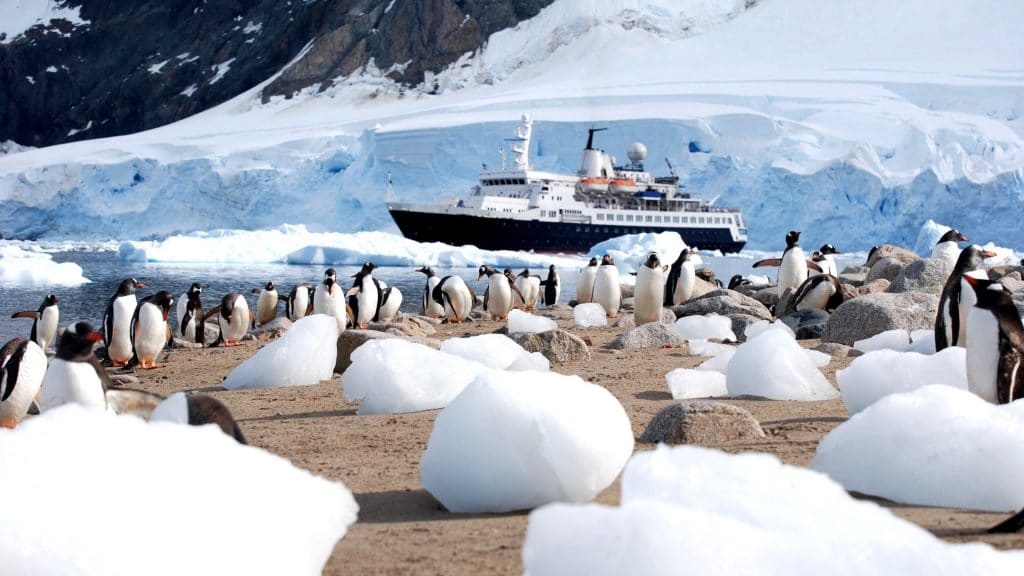
Antarctica is the southern continent that was the latest discovered by the researchers. The International Treaties are responsible for preserving the land’s nature where no one lives and which does not belong to anyone. Any activity is prohibited here, except scientific. The history of the Antarctica discovery is fraught with intriguing moments.
First Antarctic researches
People assumed the existence of a large continent in the south (the so-called Terra Australis) already in ancient times. Scientists reasoned as follows: an equally large southern continent must surely balance the presence of a large land area in the Northern Hemisphere. The first was the assumption that Australia is a southern continent, but later this hypothesis was disproved (Australia was discovered in 1606, and in 1542 Tasman Janszon went it around and proved that it was not a southern land).
Lazarev and Bellingshausen discover Antarctica
The Briton Edwards Bransfield was a little late with the discovery but still mentions in history. A little later, on January 30, 1820, he discovered the Antarctic Peninsula (this land is considered the northernmost part of the specified continent).
Further Antarctica and its lands explorations
Many scientists have devoted themselves to this continent thorough exploring. For example, the American Charles Wilkes was engaged in studying the coastline of Antarctica (about 2800 km), mapping it (1838-1842). Later, in 1874-1875, the Challenger ship, led by Charles Thompson and John Murray, conducted various research works that once again confirmed the existence of the designated continent.
There are still hot debates about the first explorer stepped on the southern continent lands. So, on February 7, 1821, the American ship Cecilia’s crew set foot on its land. Nevertheless, according to the documents, such a case was recorded on January 24, 1895. It was an expedition in which Barchgrevink, Alexander von Thunzelmann, Christensen, Johan Bull took part. Researchers collected rock samples from the new earth and even came across a fantastic finding. They have detected lichens. This was quite surprising since the climate of the mainland is residually severe. After this expedition, a lot of exploration of the mentioned land started – this time went down in history as the heroic age of Antarctic research.
Later, in 1898, the crew of the Belgica ship fixed it name in history as the first to spend the night beyond the Arctic Circle (even directly on the ship, without going down to the land). In 1898-1900, the expedition led by Barkhgrevink spent the winter in Antarctica and even climbed the Ross Glacier.
The next to intercept the relay of scientific research of this land were the British. They explored the mainland under the guidance of Robert Scott. The Discovery team’s plan was superb – the expedition planned to reach the South Geographic Pole. Nevertheless, the daredevils managed to ascend only to 82° 11′ south latitude. The next one to try getting the intended goal was Ernest Shackleton, who reached the magnetic pole in 1907-1909 (he stopped at 88° 23′ latitude, failing to reach 180 km to the geographic pole). In the period from 1910 to 1912, two expeditions were made simultaneously – Roald Amundsen from Norway and Robert Scott from Britain. Amundsen conquered the South Pole on December 19, 1911, and Scott conquered it on January 17, 1912.
In general, the heroic age of the mentioned continent research totals 16 expeditions. All of them occurred during the period from 1897 to 1922. During these scientific campaigns, 19 people became victims of harsh climate conditions.
The first manned flight in an airplane over the South Pole took place in 1928 (by Richard Byrd). Later, in 1956, the very first station, named Amundsen-Scott, was organized by the Americans in the depth of the continent.
The important document signing marked 1959. This was the Antarctic Treaty, which prohibits any activity on its lands, except for scientific. Today there are more than 80 fully functioning scientific stations on the continent. Also, the natural processes of this earth are monitored by satellites. Nowadays the detailed Antarctic maps can be found in public access. Separate research work was carried out in relation to the study of objects located directly under the Antarctic ice shield.
